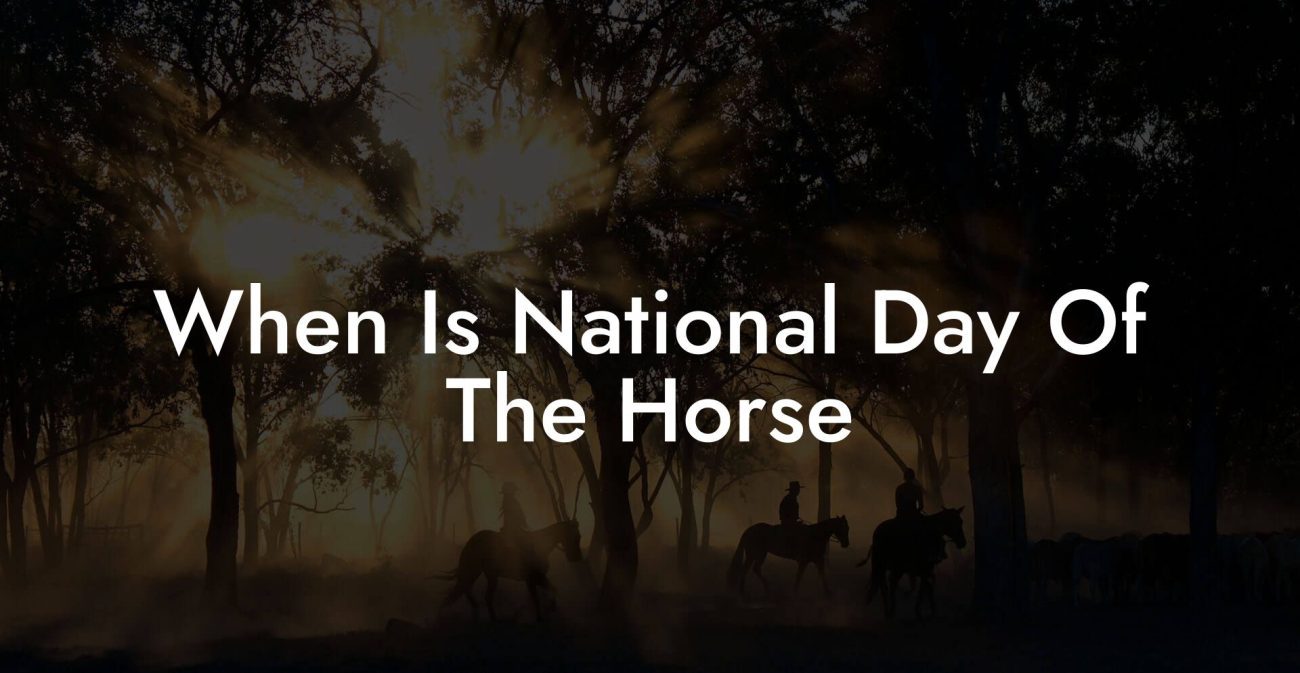What if riding a horse became less about the size of the saddle and more about the size of your adventure? When it comes to horse riding, there's a common debate: "How big is too big to ride a horse?" This isn't about measuring equine physiques on a tape measure, it’s about understanding your horse’s build, your own riding style, and the art of equine care. If you’re a Gen-Z or millennial equestrian looking to merge style with substance, get ready to gallop into a world where horse care meets modern riding wisdom, all spiced up with humor and real talk.
Quick Links to Useful Sections
- Understanding Horse Anatomy: The Real Measure of “Big”
- Decoding Horse Dimensions: What Really Matters
- When Size Does Matter: Evaluating Safety and Comfort
- Understanding the Rider-Horse Connection: More Than Just Size
- Modern Techniques to Evaluate a Horse’s Suitability
- The Art of Horse Care: Balancing Health and Performance
- Nutritional Guide for Your Equine Partner
- Exercise and Training Regimens
- Regular Health Check-Ups and grooming
- The Evolution of Riding Styles: From Classic to Contemporary
- Balancing Tradition and Modernity: The Rider’s Journey
- Resources and Community Support: Your Next Steps
- Practical Tips for Riding Big Horses: What Every Equestrian Needs to Know
- Navigating Common Challenges: Riding When Size Becomes a Talking Point
- Innovative Training Techniques: Marrying Classic Horsemanship and Modern Methods
- FAQs: Everything You Need to Know About Riding Big Horses
- Your Saddle, Your Story: Embark on the Ultimate Riding Adventure
Understanding Horse Anatomy: The Real Measure of “Big”
Horses come in all shapes and sizes, from the petite, sprightly ponies to the towering draft breeds. But when discussing “how big is too big to ride a horse?”, it’s not just about the horse’s height or weight. It’s about balance, build, and purpose. For centuries, horses have been bred for various tasks: some for racing, others for work on the farm, or even for royal processions. That means each breed has its own ideal riding profile.
Think of it this way: just like a perfectly curated playlist, your horse’s physique and temperament need to harmonize with your riding style. A heavy draft horse might be built like a tank and could easily become a gentle giant in the right hands, while a lean, agile thoroughbred might be perfect for speed but not for heavy-duty hauling. So, before you ask whether a particular horse is “too big” for a ride, consider its purpose, physical structure, and the type of riding you want to practice.
For example, if you’re into trail riding through scenic landscapes or competitive jumping, the factors to consider include the horse’s frame, muscle distribution, and overall fitness. A horse that might seem “big” on paper could simply be built to carry experienced riders over rough terrains without breaking morale, or bones.
Decoding Horse Dimensions: What Really Matters
When it comes to sizing up your equine companion, there are a few key metrics that truly matter:
- Height: Measured in hands (one hand equals 4 inches), height can indicate the horse’s breed and potential use. For instance, horses above 16 hands are often considered large and are common in Western riding styles, while smaller horses, though not necessarily “too big”, may be ideal for specific disciplines or younger riders.
- Weight and Build: A horse’s body weight should correlate with its muscle mass and bone structure. A hefty horse can carry a load gracefully if it has a robust build, whereas a leaner horse might excel in speed and agility.
- Body Proportion: Proportions matter. A horse with a long back and short legs may not carry weight as efficiently as one with a balanced structure, no matter its overall size.
- Body Condition Score (BCS): This is essentially the horse’s “BMI” in the animal world. Tracking your horse’s BCS helps ensure it isn’t overfed or undernourished, both of which can impact its performance and general health.
These factors come together to paint a picture of your horse’s readiness for the saddle. They shape your decision-making process about which type of riding, and which rider, is best suited for your majestic steed.
It’s all about context: a heavyweight might be perfect for a long, leisurely trail ride but not ideal for high-speed polo or dressage, where agility and fluid movement carry the day.
When Size Does Matter: Evaluating Safety and Comfort
Let’s get real, there are certain safety considerations when dealing with larger horses. It's not just a question of aesthetics or bragging rights. When a horse is on the bigger side, weight distribution and rider balance become even more crucial. Just like choosing the right pair of sneakers can transform your running experience, matching your riding gear and technique to your horse’s size is essential.
Consider these aspects:
- Saddle Fit and Balance: A well-fitting saddle isn’t just a luxury, it’s a necessity. For larger horses, the saddle must distribute the rider's weight evenly over the horse's back. This minimizes pressure points and enhances overall comfort for both the horse and rider.
- Rider’s Weight and Position: If you’re riding a big horse, your own body weight and positioning are key. Learning to maintain balance and using your core muscles can prevent discomfort for your horse and reduce the risk of injury.
- training and Conditioning: Both horse and rider benefit from proper conditioning. A strong, healthy horse with rich muscle tone is better equipped to handle the challenges of carrying riders over long distances or through rigorous training sessions.
- equipment Considerations: From bridles to stirrups, every piece of equipment plays a role in the riding experience. Upgrading to gear that’s designed for larger horses can make a world of difference.
Safety isn’t just about preventing falls, it’s about ensuring that both you and your horse enjoy every ride, free from discomfort and undue strain. It’s a balance between feeling empowered and respecting the natural limitations (and strengths) of your equine partner.
In some cases, a horse deemed “big” might be the perfect match for a seasoned rider with years of practice in maintaining balance and finesse. Conversely, a larger horse might not be the best choice for a beginner who is still mastering the basics of posture and weight distribution.
Understanding the Rider-Horse Connection: More Than Just Size
Here’s the kicker: riding is a two-way street, and the connection between rider and horse goes way beyond physical dimensions. If you’re all about those good vibes and deep bonds, then the size debate takes a backseat to communication, trust, and mutual respect.
Think of it like a perfectly choreographed dance, your horse is your partner. The better synced your steps are, the more graceful the performance becomes on horseback. It’s not solely about the horse’s size or your own weight; it’s about reading each other’s cues and working together as a cohesive team.
Some riders even say that when you truly connect with your horse, any size concerns just melt away. Your horse’s personality, temperament, and training level become the starring factors that dictate your riding journey.
In essence, building that strong rider-horse bond is pivotal. It can make the difference between a ride that’s fraught with tension and one that’s a liberating escape into the great outdoors.
Modern Techniques to Evaluate a Horse’s Suitability
With the era of smartphones and smart gadgets, evaluating your horse’s condition has moved beyond traditional measuring sticks. Modern technology is revolutionizing how we care for and understand horses, making the entire process more scientific and precise.
Digital Body Condition Scoring: Gone are the days when you’d rely solely on visual assessments. Many modern equestrians now use digital tools to track a horse’s body condition score in real-time. These apps analyze photos and other metrics to ensure your horse is at its optimum condition for riding.
Smart Saddles and Monitoring Devices: Yes, riding gear has gone high tech! Some smart saddles come equipped with sensors that monitor the weight distribution between you and your horse. These devices help ensure that every ride is not only comfortable but also aligned with your horse’s physical capabilities.
GPS and Fitness Trackers: Similar to how you might track your steps or heart rate, there are trackers designed specifically for horses. They provide data on movement patterns, speed, and overall performance, which can indicate whether your horse is overexerted or riding comfortably within its limits.
These technological advancements bridge the gap between traditional horsemanship and modern science. They empower riders, especially tech-savvy Gen-Zers and millennials, to make informed decisions about horse care and riding practices.
The Art of Horse Care: Balancing Health and Performance
Taking care of a big horse doesn’t mean you’re confined to the basics. Modern horse care is an art form that blends nutrition, exercise, and regular health check-ups. Whether you’re managing a larger breed or simply curious about optimal equine care, these keys to success will keep your horse, and your riding experience, top-notch.
Nutritional Guide for Your Equine Partner
A nutritionally balanced diet is as essential to a horse as a smartphone is to a millennial. High-quality forages, balanced grains, and vitamin supplements ensure your horse’s muscles, joints, and overall health are in prime condition. For larger breeds, diet monitoring becomes critical to avoid obesity or nutritional deficiencies, both of which can hamper performance.
Integrate your horse’s feeding routine with regular check-ups to tailor the diet to its specific needs. Nutritional support goes hand in hand with physical care, providing the energy needed for long rides, rigorous training sessions, and even recovery after a heavy day at work.
Exercise and Training Regimens
While it might seem like a treadmill is only for humans, your horse also needs regulated exercise to maintain a healthy weight and strong muscles. Tailored training sessions, and occasional fun trail rides, are essential. Whether you’re working on endurance, strength, or agility, your exercise regimen should adapt not only to your horse’s size but also to its unique conditioned responses.
Incorporate a blend of cardio and strength training. Warm-up exercises, cool-down stretches, and focused strength drills can help your horse stay robust and resilient. This approach not only keeps your horse physically sound but also contributes to overall mental well-being, making the journey interactive and enjoyable.
Regular Health Check-Ups and grooming
Routine health check-ups with a trusted veterinarian are your frontline defense against potential issues. Just as you’d schedule a digital detox to keep your mental health in check, regular visits help monitor your horse’s body condition, ensuring early detection and treatment of possible problems.
Grooming is another critical aspect. Beyond keeping your horse looking Instagram-ready, thorough grooming sessions promote blood circulation, strengthen the bond between you and your horse, and allow you to notice any subtle signs that might require professional attention.
Remember, caring for a big horse is about respecting its unique needs and ensuring every facet of its well-being is attended to with love, care, and modern know-how.
The Evolution of Riding Styles: From Classic to Contemporary
Riding styles have evolved, and today’s equestrian scene is as diverse as your favorite streaming playlists. Whether you’re drawn to classic English riding, soulful trail adventures, or even the bold world of Western riding, understanding how size factors into each discipline is key.
Classics like dressage and show jumping require precision, whereas Western riding emphasizes relaxation and fluid connection. For larger horses, the Western saddle, with its deep seat and balanced design, might offer extra support, enhancing comfort during extended rides across rugged terrains.
Meanwhile, modern equestrians are reimagining what it means to ride: merging technology, innovative equipment, and dynamic training programs. The once-rigid boundaries of traditional riding have given way to a landscape where customization is king. Whether tweaking your saddle’s fit using smart technology or adjusting your riding posture based on real-time feedback, today’s riding techniques are as much about innovation as they are about heritage.
Embracing contemporary riding styles doesn’t mean forsaking the art of horsemanship, it means elevating it. With a keen eye for detail and a willingness to experiment, you can find the perfect blend that suits both your big, beautiful horse and your modern lifestyle.
Balancing Tradition and Modernity: The Rider’s Journey
At the crossroads of vintage charm and cutting-edge modernity lies the heart of horse riding. You’re not just straddling a beast of burden; you’re part of a cultural tapestry woven from centuries of equestrian tradition and the innovations of the digital age.
Today's riders embrace traditional horse care, grooming, stable management, and time-honored training methods, while also harnessing modern gadgets and smart technology to guide every ride. All the while, a little humor and a lot of passion fuel the passion for equine sports and recreation.
Balancing these worlds involves continuous learning, community engagement, and the willingness to adapt. For Gen-Z and millennial riders, it’s not only about mastering classical riding techniques, it’s about redefining them to suit a fast-paced, visually driven lifestyle where authenticity and innovation go hand in hoof.
With every ride, you’re writing a new chapter in a story as old as time yet as fresh as your morning coffee. Harness that spirit and let it propel you toward equestrian adventures that merge classic horsemanship with the bold innovation of our era.
Resources and Community Support: Your Next Steps
Now that you’ve delved into the multifaceted world of riding and horse care, it’s time to take your passion to the next level. Here’s how you can continue your journey:
- Join Online Communities: Platforms like Instagram, TikTok, and specialized equestrian forums are buzzing with tips, tutorials, and real-life experiences from riders of all levels. Follow riding influencers and equestrian groups for daily inspiration.
- Attend Workshops and Webinars: Look out for local events or online classes focusing on horse care, saddle fitting, and advanced riding techniques. These sessions often offer unique insights and practical advice that can complement your everyday practices.
- Consult with Professionals: Whether it’s a seasoned trainer or an equine nutritionist, professional guidance can help tailor a program that’s best suited to your horse’s unique attributes, regardless of its size.
- Explore Technology: Get your hands on smart gear like digital stable trackers, GPS-enabled fitness devices for horses, and high-tech saddles. These innovations can elevate your riding experience while ensuring safety and comfort.
- Engage in Local Equestrian Events: From community rides to competitive shows, local events are a fantastic way to network, learn, and showcase your riding skills. They also serve as a reminder that the world of horses is ever-evolving, blending tradition with trailblazing modernity.
These resources aren’t just tools; they’re your launchpad to a vibrant community that celebrates the joy of horse riding. No matter if your horse is “big” or simply breathtaking, every ride is a chance to learn, laugh, and push the boundaries of what’s possible in equine care.
Practical Tips for Riding Big Horses: What Every Equestrian Needs to Know
Riding a larger horse calls for some practical know-how. Here are some down-to-earth tips for ensuring every ride is safe, fun, and respectful to the talented animal carrying you along:
- Check the Saddle Fit: A misfitting saddle can cause discomfort and even injury. Ensure the saddle not only fits your horse’s back but also aligns with your riding posture for a balanced ride.
- Warm-Up and Cool-Down: Like any good workout, start with a gentle warm-up to loosen the muscles, and finish with a cool-down routine to ensure your horse recovers smoothly after each ride.
- Focus on Your Posture: Engage your core, keep a straight back, and avoid putting undue pressure on any one part of your horse’s body. A strong, centered posture helps distribute your weight evenly.
- Monitor Your Horse’s Reactions: Pay attention to subtle cues, a tilt of the head, a flick of the ear, or a change in gait might indicate discomfort. Constant communication is key.
- Utilize Training Aids: Tools like balance pads, smart girths, and even instructional apps can help fine-tune your riding technique, making every ride a learning experience.
Each of these tips underscores the importance of respect, for your horse, for your body, and for the art of riding itself. When you treat your equine partner as an intelligent and sensitive creature, your rides become more than just a mode of transport, they transform into a shared journey of discovery.
Whether you’re just starting out or you’re a seasoned rider, these practical insights bridge the gap between sheer technique and the holistic experience of being in sync with your horse.
Navigating Common Challenges: Riding When Size Becomes a Talking Point
Sometimes, riding a larger horse can pose unique challenges that might leave you scratching your head (or adjusting your helmet). Here are a few common issues and how to tackle them head-on:
- Saddle Pressure Points: If you notice your horse uneasy after a long ride, it could be due to uneven pressure from the saddle. Regular saddle checks and professional fittings can help ensure that every ride is comfortable.
- Rider Imbalance: Even the most experienced riders can struggle with maintaining the perfect center of gravity, especially on a bigger horse. Taking lessons with a focus on balance drills can increase your confidence and stability.
- Communication Barriers: Larger horses, due to their size, may sometimes seem more intimidating, making it crucial to develop non-verbal cues. Consistent training and spending extra time building trust can transform potential friction into a seamless conversation between you and your horse.
- Environmental Considerations: Different terrains may impact a bigger horse differently. Whether on soft trails or rugged paths, adapting your riding style and equipment to suit external conditions can make a significant difference.
Overcoming these challenges is part of the journey. Every hurdle provides an opportunity to learn more about equine behavior, fine-tune your riding skills, and ultimately, create a more harmonious relationship with your larger equine partner.
Innovative Training Techniques: Marrying Classic Horsemanship and Modern Methods
There’s a sweet spot where classic horsemanship meets modern innovation. Today’s training methods blend the best of both worlds to create a riding style that’s as respectful as it is effective.
Some innovative training techniques include:
- Virtual Riding Simulators: Yes, technology has galloped into the arena! Virtual simulators help riders practice posture and balance without putting undue pressure on their horses. It’s a safe space to nail down your technique before hitting the trails.
- Wearable Technology: With wearables that monitor both rider posture and the horse’s muscular strain, you can get instant feedback on your riding dynamics. This real-time data helps you make on-the-spot adjustments that enhance the overall experience.
- Interactive Training Apps: A fusion of traditional exercises enhanced by interactive apps can offer guided routines, instructional videos, and even personalized training plans, so you’re never short on motivation or know-how.
These innovative methods don’t replace the fundamentals of riding, they build upon them. As you integrate new techniques into your routine, you’ll find that the fusion of classic wisdom and modern tools offers an enriched, adaptive approach to riding that speaks to the dynamic lifestyles of today’s equestrians.
FAQs: Everything You Need to Know About Riding Big Horses
Here are some of the most frequently asked questions about riding larger horses, answered in a way that’s both down-to-earth and informative.
1. How do I determine if a horse is too big for me?
It isn’t just about size, consider balance, your own experience, and the horse’s build. A properly fitted saddle and consistent training sessions will help you gauge if both you and your horse are harmoniously matched.
2. What are the safety considerations when riding a larger horse?
Safety aspects like saddle fit, rider posture, and overall horse conditioning are essential. Additionally, modern equipment and technology can provide real-time insights to ensure that both you and your horse are riding safely.
3. Can a bigger horse handle advanced riding techniques?
Absolutely, provided the horse is healthy and well-conditioned. Many larger horses are used in disciplines that require advanced techniques. The key is proper training and a close rider-horse connection.
4. How can technology help me ride a big horse more safely?
From smart saddles that monitor weight distribution to wearable tech that tracks your posture, modern gadgets provide essential data that can help rectify imbalances and fine-tune your riding style.
5. Is there specific equipment recommended for larger horses?
Yes, specialized saddles, bridles, and supportive gear designed for larger frames are available. These not only enhance comfort but also ensure that pressure is evenly distributed to avoid injury.
6. What training techniques are most effective for big horses?
A combination of classical horsemanship, modern conditioning exercises, and the use of smart technology can be extremely effective. Focus on building the horse’s strength, flexibility, and overall endurance gradually.
7. How do I build a strong connection with a bigger horse?
The foundation of any successful rider-horse relationship is trust, clear communication, and empathy. Spend quality time, understand the horse's signals, and engage in regular training sessions that cater to both your needs.
8. Can I ride a larger horse if I’m a beginner?
While beginners may face challenges, proper guidance from experienced trainers and the use of specialized equipment can make riding larger horses accessible and safe, even for those just starting out.
Your Saddle, Your Story: Embark on the Ultimate Riding Adventure
You have the power to redefine what it means to ride. It’s not about whether your horse is big or small, it’s about the journey you share, embracing tradition while boldly stepping into the future. Whether you’re analyzing digital metrics on your smart saddle, engaging with a thriving online community, or simply enjoying an impromptu ride at dawn, remember that every journey starts with a single stride.
Embrace the lively interplay of science, tradition, and a whole lot of heart. Equip yourself with the knowledge to ensure that both you and your equine partner can reach new heights, safely, confidently, and with a dash of humor along the way.
So, the next time someone asks, “How big is too big to ride a horse?” you’ll know it’s never about the size, it’s about the synergy between you, your gear, and the magnificent creature beneath you. Your journey is as vast as the open fields, and every ride is your opportunity to create a legacy worth sharing.
Saddle up, stay curious, and let your passion for riding soar. The open trail awaits, ready to turn every challenge into a new chapter of your equestrian story.













